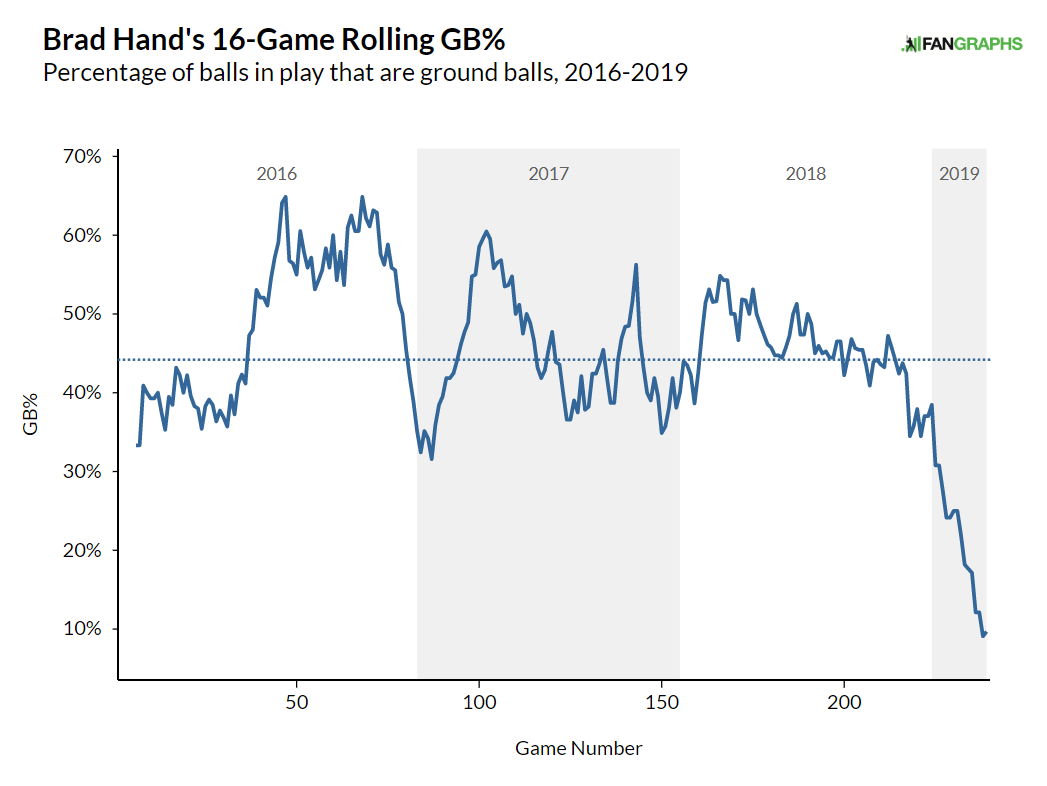Below is an analysis of the prospects in the farm system of the Cleveland Indians. Scouting reports are compiled with information provided by industry sources as well as from our own (both Eric Longenhagen’s and Kiley McDaniel’s) observations. For more information on the 20-80 scouting scale by which all of our prospect content is governed you can click here. For further explanation of the merits and drawbacks of Future Value, read this.
All of the numbered prospects here also appear on The Board, a new feature at the site that offers sortable scouting information for every organization. That can be found here.
Other Prospects of Note
Grouped by type and listed in order of preference within each category.
Some More Really Young Guys
Raynel Delgado, SS
Marcos Gonzalez, SS
Korey Holland, OF
Delgado just turned 19. He’s a patient, switch-hitting infielder with some low-ball ability from the left side, though his swing can get long. Marcos Gonzalez will be 19 all year and was assigned to full-season ball. He’s a polished defender with a small but well-proportioned frame, and average bat speed, but limited bat control. Holland will also be 19 all year. He’s a plus runner with some feel to hit but came to pro ball with a poor swing foundation, so he’s a bit of a project.
Catching
Eric Haase, C
Sicnarf Loopstok, C
Logan Ice, C
Haase has power, he strikes out, and he’s not a great defender. It’s an Evan Gattis-ish profile. Eli Ben-Porat identified Loopstok as an elite receiver, something corroborated to me by an office source. He’s also performed on paper the last two years. He might factor into the 40-man catching picture soon. Ice’s numbers were bad last year but he’s still a fine defender and hits the ball in the air a ton.
Power Relief Arms
Juan Mota, RHP
James Karinchak, RHP
Mota’s fastball doesn’t have great angle, but it’s hard and moves. His slider is just average but when he locates it, it gets swings and misses. Karinchek throws in the mid-90s and has a unique, over-the-top delivery.
Upper-Level Outfielders
Oscar Gonzalez, OF
Andrew Calica, OF
Alex Call, OF
Mitch Longo, OF
Gonzalez, 21, is an old school, gloveless free-swinger who takes big hacks at everything. Calica had a great sophomore year at UCSB, then fell off as a junior. He’s fast and makes contact, and could be a fourth outfielder. Call has more power, but it’s doubles thump, and he doesn’t run quite as well as Calica. Longo seemed to be a 2018 swing changer and does a little of both.
Changeup Artists
Chih-Wei Hu, RHP
Raymond Burgos, LHP
Zach Plesac, RHP
Eli Lingos, LHP
Ben Krauth, LHP
Hu has been developed as a kitchen sink starter and is probably rotation depth for now, but ultimately, he’ll likely stick in someone’s bullpen with a more limited repertoire. Burgos has a low three-quarters slot, and sits 91-94, with the cambio. Plesac is coming off of Tommy John. He has the hardest fastball among the non-Hus in this category, but also has the worst command. Krauth throws harder than Lingos, but Lingos is a few years younger and doesn’t need to be on the 40-man for a while.
Can Spin It
Jerson Ramirez, RHP
Kyle Nelson, LHP
Kirk McCarty, LHP
Ramirez is only 20 but throws in the low-90s and averaged 2700 rpm on his curveball last year. Nelson can really pitch and carved up Low-A in 2018. He sits 88-91 but beats hitters with it anyway, and his good slider has bat-missing vertical action. McCarty’s release point clearly makes lefties uncomfortable and he has a good two-plane breaker.
System Overview
Cleveland seems to be one of the game’s more rational actors. Well aware of their competitive window, the team moved several young players in exchange for players who, while perhaps possessing less upside, are more likely to help them soon. Tahnaj Thomas for Jordan Luplow. Jhon Torres for Oscar Mercado. Gionti Turner for Chih-Wei Hu. Ignacio Feliz for Walker Lockett. These are moves designed to create depth behind the talented and competitive big league roster as other teams need to shed 40-man weight. Nash Equilibrium and all that. It’s team building on a budget, a front office making do with what ownership seems willing to spend.
We’ve talked about this here before, but Cleveland executes their draft strategy so well that it’s easy to see what it is. They almost always end up with some of the youngest high school players in the draft, and they often seem to end up with players who had strong sophomore college seasons, but down junior years, or high school players who were great during the previous summer but fell during their senior spring. It suggests they more evenly weigh multiple years of performance, perhaps consciously avoiding recency bias in places where other teams and individuals see progress.


